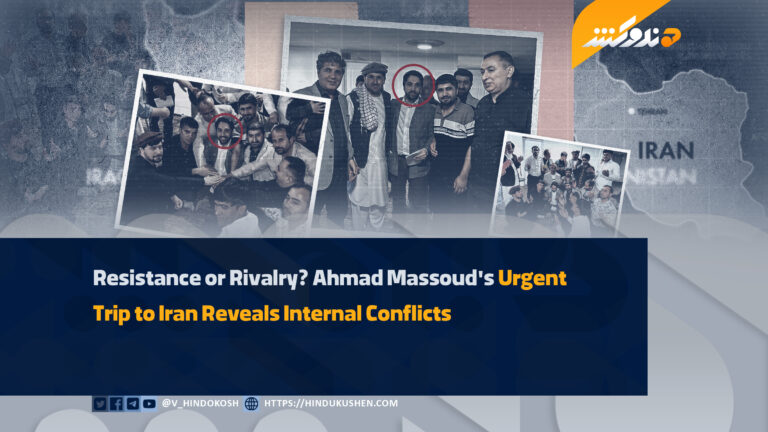The Resistance Front, from its inception to today, has not only failed to win any ground against the Taliban, but the internal conflicts, rivalries, and personal political competitions within this front are increasing day by day.
The Trip of Mohaqiq and the sensitivity of Massoud:
Mohammad Mohaqiq, a prominent political leader of the Hazara community and a member of the Resistance Council, caused great unrest and concern for Ahmad Massoud when he led a delegation to Iran. Massoud considered this trip a threat to his political position, as it became clear that Iran was keeping the doors of cooperation open not only with him but also with other political figures.
The Iranian support of tens of thousands of dollars has also strengthened the suspicion that Iran may want to shift the political focus away from Ahmad Massoud and instead bring forward figures whose interests align more closely with theirs.
Iran – A Valuable Player or a Two-Faced Partner?
Iran has long been a country with influence and connections to Afghanistan’s political groups; the gap of at least ten days between Ahmad Massoud’s and Mohqiq’s trips indicates that Iran is trying to maintain contact with various factions.
Although, based on the information from Voice of Hindukush, Iranian officials assured Ahmad Massoud that their meeting with Mohaqiq was ceremonial, this reassurance does not mean anything other than a policy of political prudence and balance. Iran does not want to invest in just one side, but rather controls the distances between all opposing fronts for political influence.
Internal Conflicts within the Resistance Council:
The delegation’s visit to Iran under the leadership of Mohqiq, without including close associates of the Resistance Front and Ahmad Massoud, indicates a deep-seated disagreement within the council over trust, influence, and representation. Ahmad Massoud himself, along with Ismail Khan and Hazrat Ali in Iran, who have been loyal to Ahmad Massoud and share some commonalities, were kept unaware and later expressed their objections in strong terms.
This action shows that the council members are trying to isolate Masood and use the flag of resistance for their political goals. These disagreements are not limited to meetings but have extended to the national assembly, which eventually led to expelled from the assembly as well.
The Stances of Sayyaf, Ismail Khan, and Others:
Siyaf’s opposition, Ismail Khan’s ignorance, and Hazrat Ali’s criticism show that the council and front formed in the name of resistance are, in reality, a collection of disparate personalities, ethnic lobbies, and personal interests rather than a strong and unified structure. This front is neither centered around a single ideology nor organized based on a schedule and goal.
Conclusion – The Shadow of Resistance and Political Vacuum
Ahmad Massoud’s protest trip to Iran shows that the main axis of the conflict is neither military struggle nor the fate of the refugees nor the salvation of the country (!), but rather personal status, political rivalry, and financial resources. Such a situation is not only a sign of a failed front but also indicates the defeat of their entire political class.




